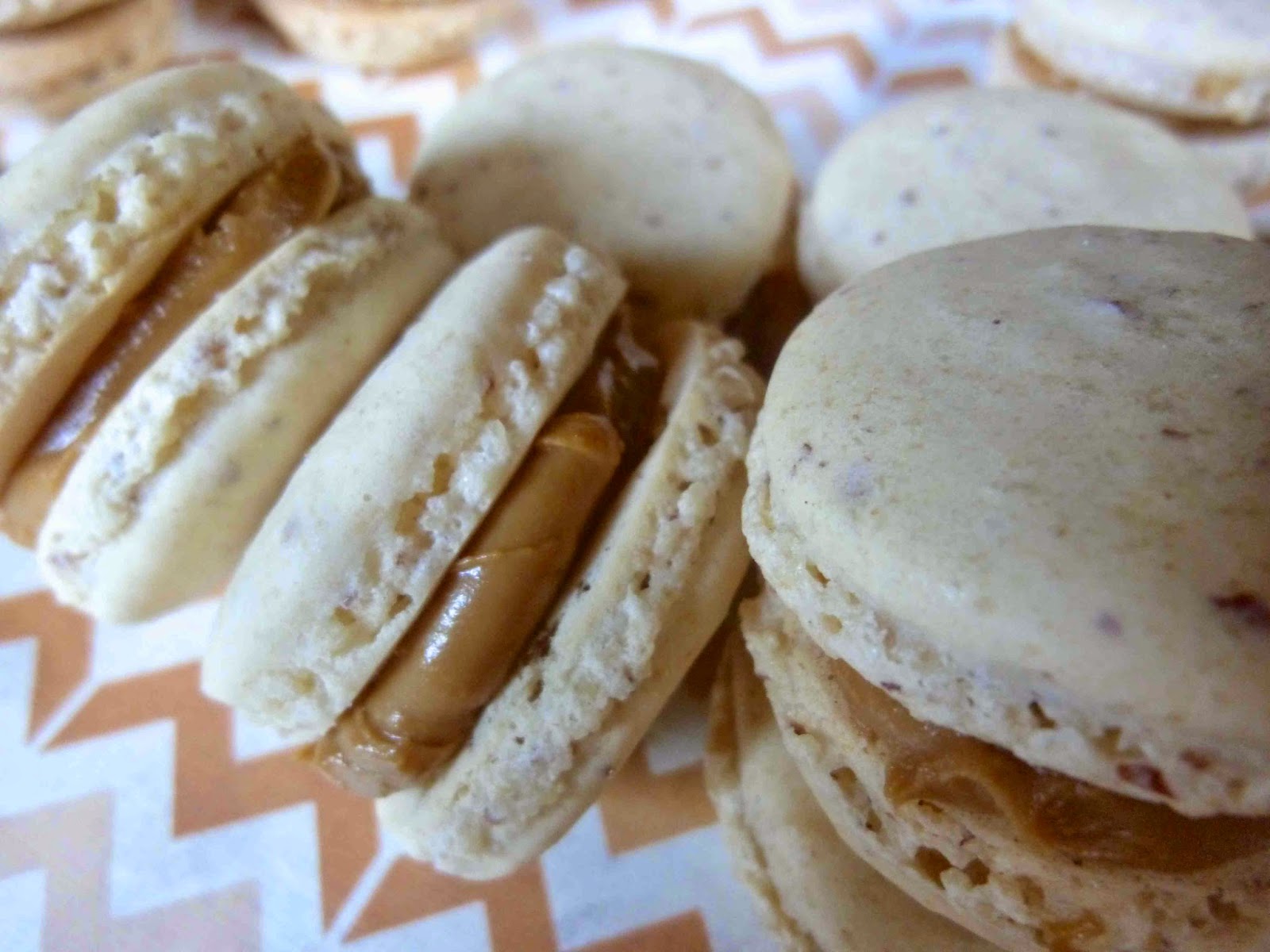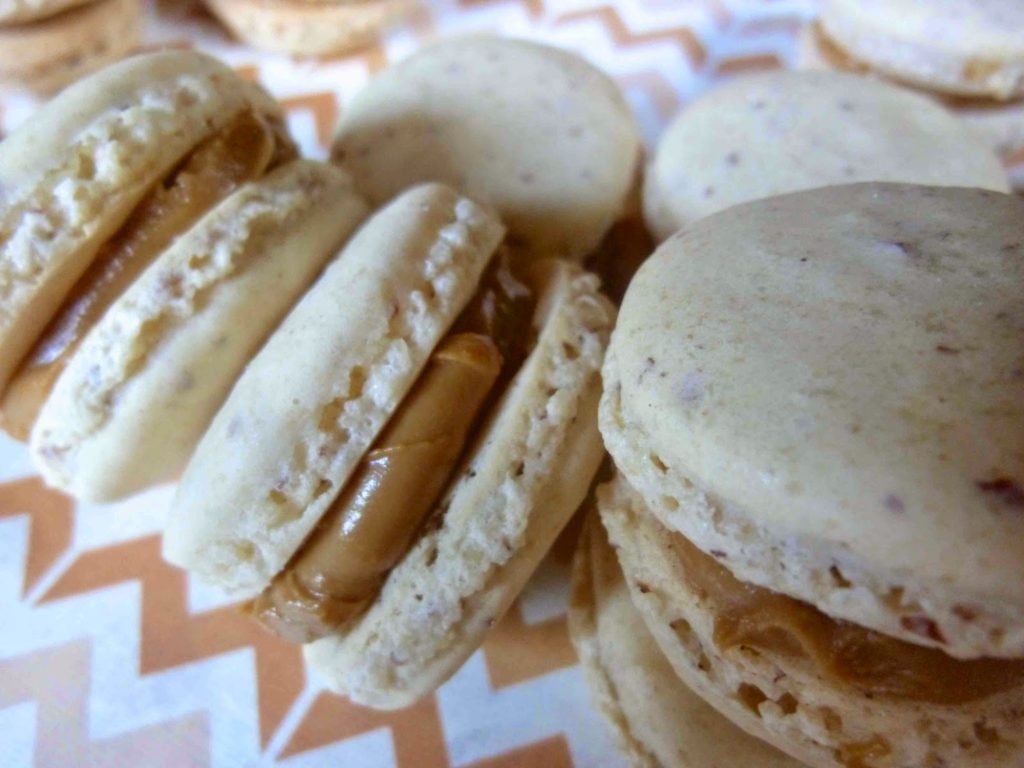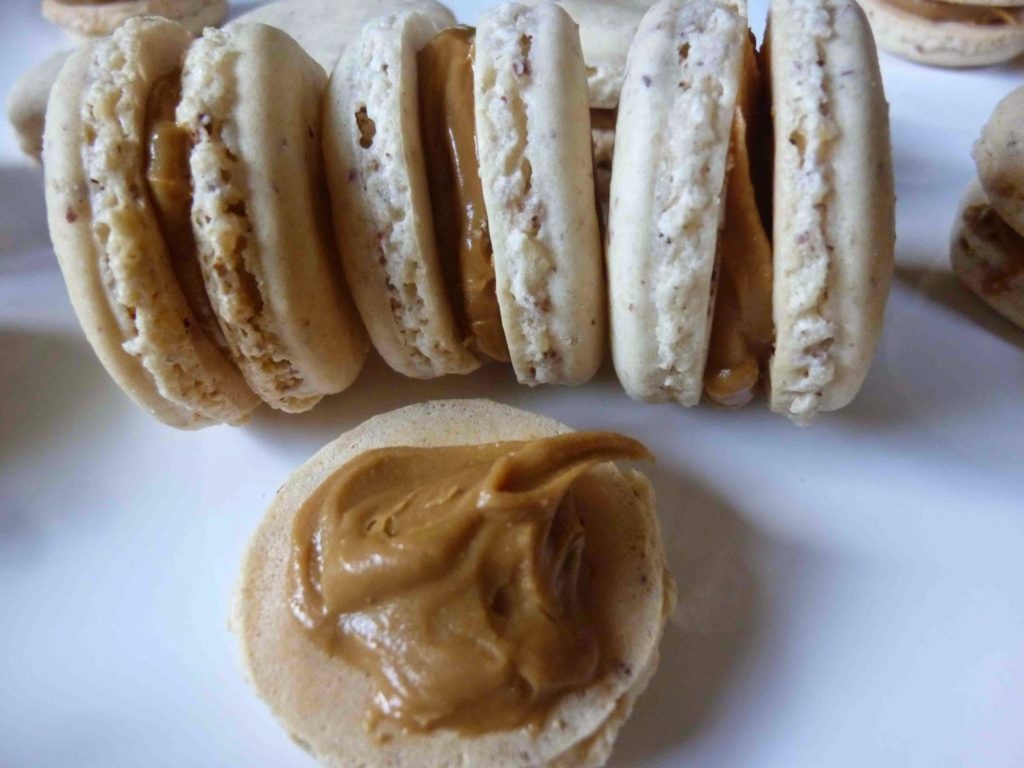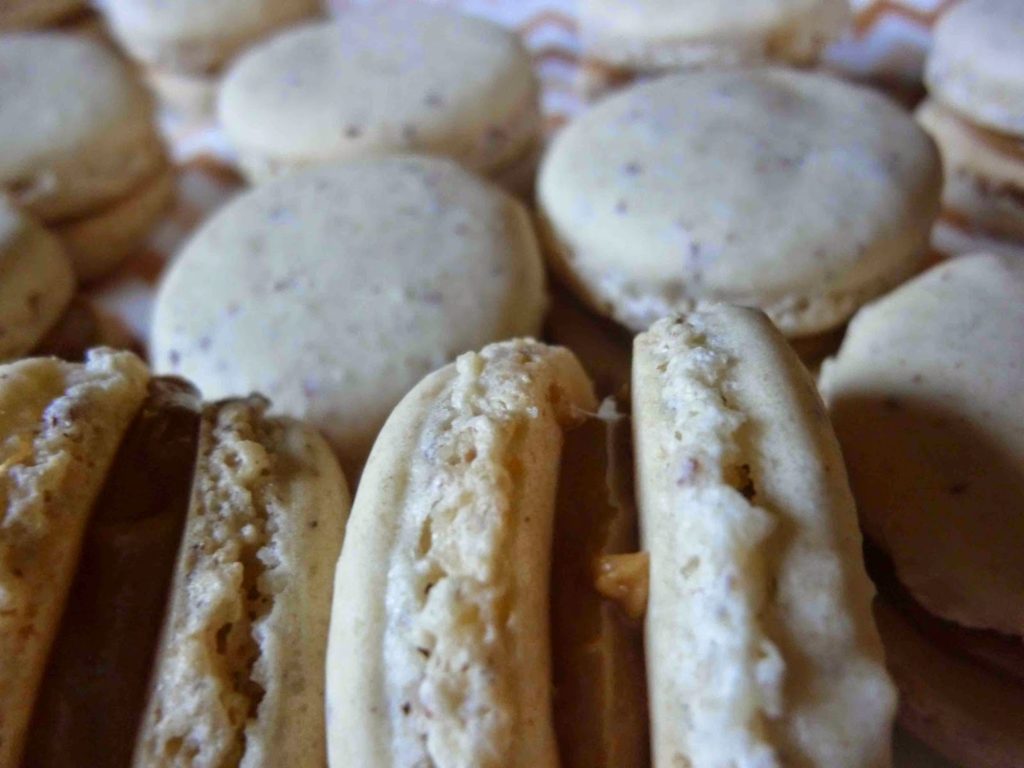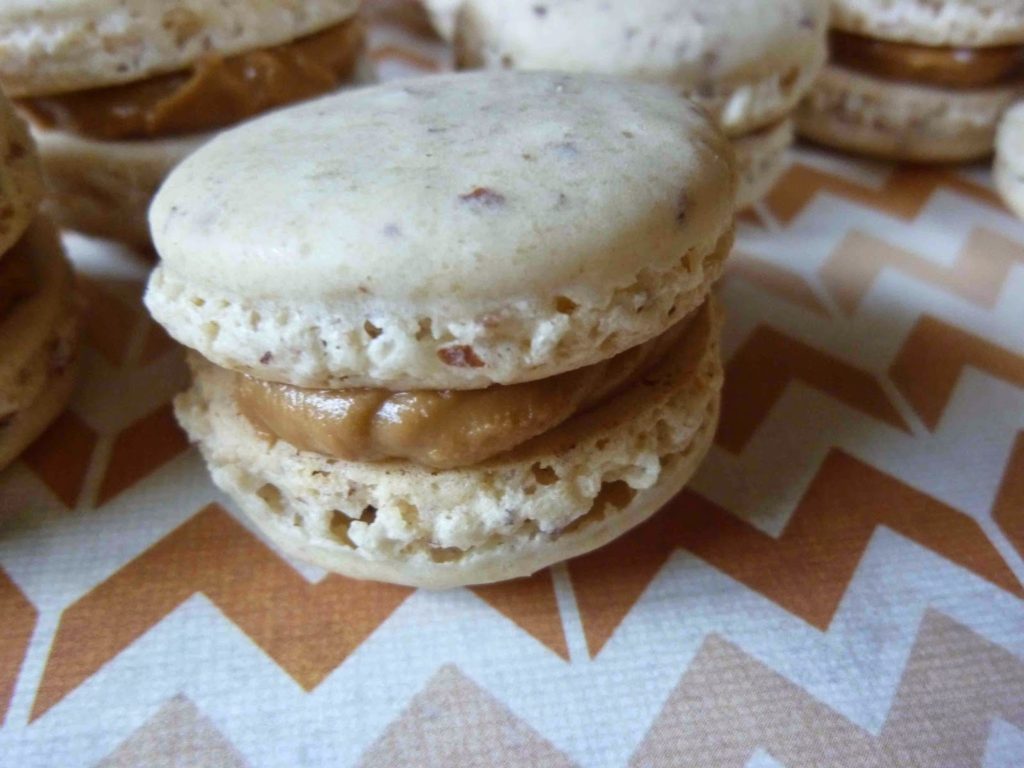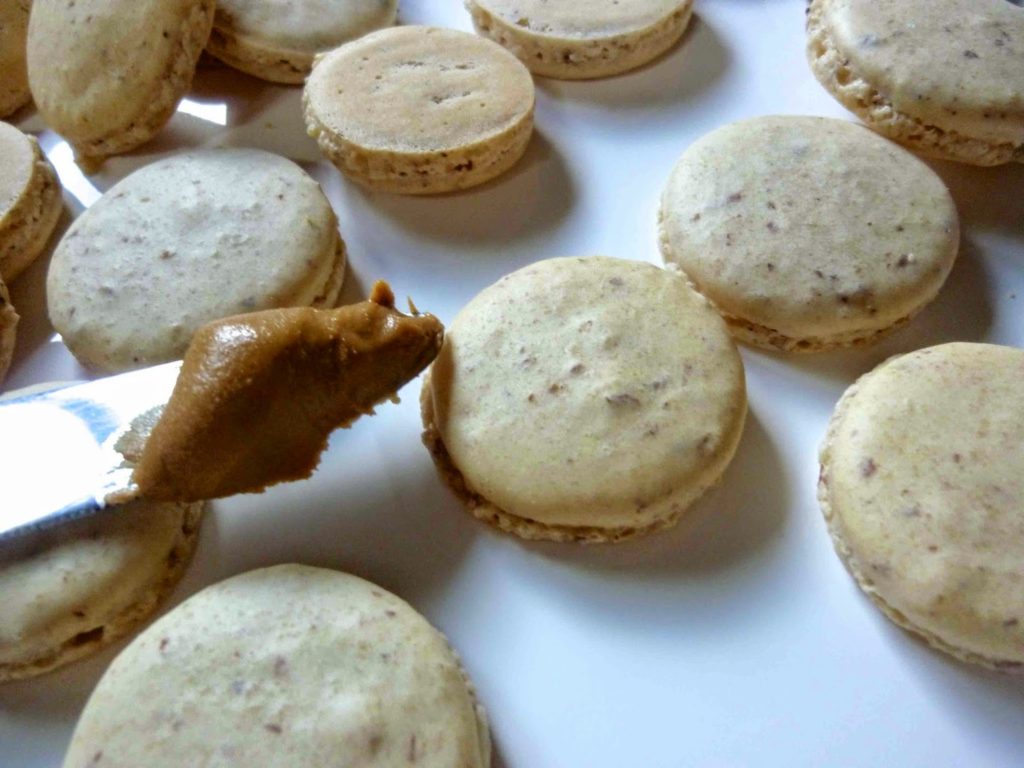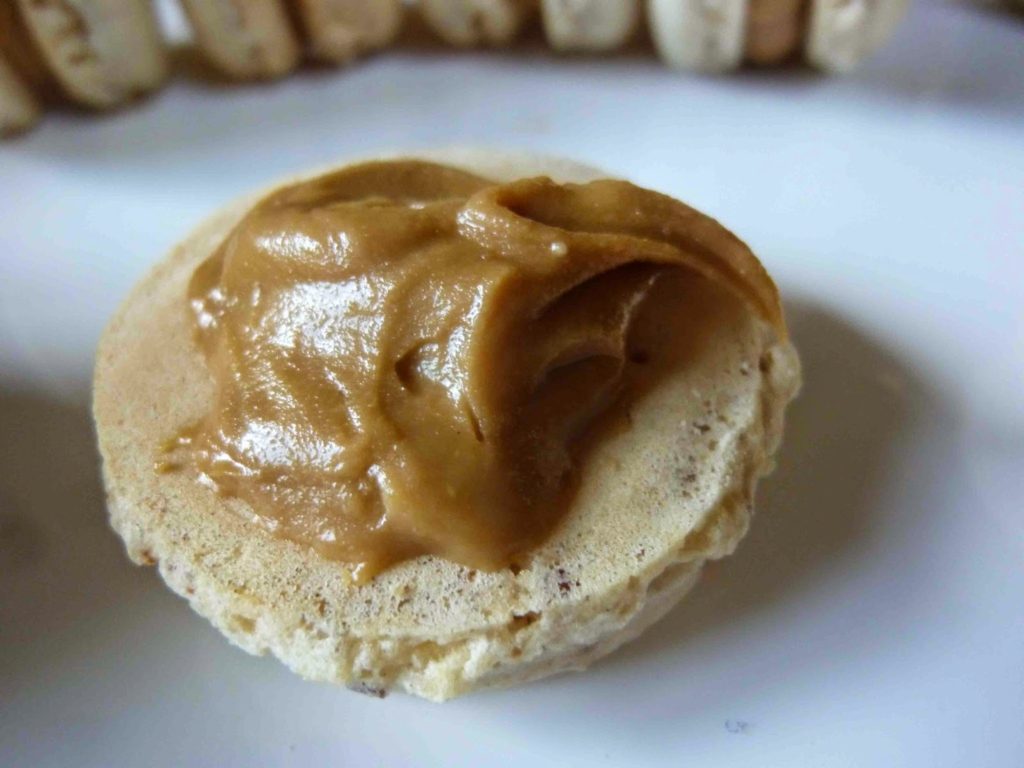It’s embarrassing to admit this but I found a half empty jar of Biscoff creamy spread while I was looking for something else in my kitchen cabinets. I mean who leaves a half empty jar of amazing goodness and forgets about it?
To make up for it, I filled these delicious French macaron shells with the creamy goodness that is Biscoff. I may or may not have finished the rest with spoon.
I hoard these flavor sugar packets from Germany. These needed to be used up before expiring and they definitely got sacrificed for a good cause.
Replacing the sugar in the macaron recipe with this caramel vanilla variety created a warm, beautiful flavor and the feet didn’t suffer.
In this French macaron caramel, vanilla and Biscoff flavors come together in perfect sweet harmony.
Use a kitchen scale for precise measurements.
- 90 grams of egg whites – aged at least 2 days. Let them sit out on the counter uncovered.
- 25-50 grams of fine granulated caramel vanilla flavored sugar
- 200 grams of powdered sugar
- 110 Grams of almond flour*
- Pinch of cream of tarter
- Pinch of salt
- 1/3 cup Biscoff cream
*You can buy almond flour that has been ground with or without the skin. I use the later (blanched). The former looks really nice if you are not coloring the shells. You can also grind your own almond flour by putting whole or sliced almonds in a food processor or blender. If you do, make sure you throw a little of the powdered sugar in to prevent the almonds from forming a paste.
- Line two baking sheets with parchment paper or use a silpat.
- Sift the powdered sugar and almond flour together or pulse them together briefly in a food processor. Make sure there are no large pieces.
- Whip the egg whites. When they start to get foamy, slowly add the caramel vanilla sugar. Continue whipping until you can turn the bowl upside down and nothing slides out. Add the pinches of salt and cream of tartar.
- Add the powdered sugar/almond mixture to the egg white mixture and fold, using quick strokes at first then slow down. The batter should have a “flowing like lava” consistency. Make a peak of the batter and if it does not disappear after 5-7 seconds, keep folding. If it’s running all over the place, you will probably have to start over. Place a pastry bag fitted with a round shaped tip in a tall water and and fold the edges down around the glass.
- Fill the pastry bag with the macaron batter, twist the open top to secure and pipe circles onto a baking sheet lined with parchment paper or on a Silpat.
- Let the macarons dry for about a half hour or until they harden.
- Preheat oven to 325 degrees F.
- Place the macarons on the middle rack in the oven. I keep the oven door propped open with a dish towel or wooden spoon.
- I place another empty baking sheet on top to prevent the shells from becoming toasted and discolored.
- Bake for 18-20 minutes.
- When checking them after 10 minutes or so, if the ones in the back of the sheet seem to be cooking faster that the ones in front, flip the tray around.
- To test to see if they are done, peel the baking paper or silpat back, if the shell comes off easily, they are done.
- If you do have a problem with the shells sticking to the surface when removed from the oven, lift up the baking paper and pour a bit of water underneath. this will steam them off the paper.
- Transfer to a baking rack and let cool completely before matching up the shells into pairs according to size.
- Use a butter knife to gently fill the shells with Biscoff cream.

